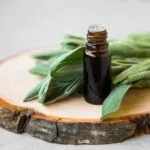Aromatherapy has gained significant popularity as a holistic approach to promoting health and well-being, with essential oils being used to address various physical and emotional issues. A key component of aromatherapy is the use of diffusers, which are designed to disperse essential oil molecules into the air for inhalation. One common question that arises is: how much vapor does an aromatherapy diffuser give off?
Understanding vapor production in aromatherapy diffusers is essential for maximizing the therapeutic benefits of essential oils. Factors such as diffuser type, oil viscosity, and diffusion method can all impact the amount of vapor produced. In this article, we will explore the different types of aromatherapy diffusers and their vapor output, as well as discuss the factors that affect vapor production.
By gaining a better understanding of vapor output in aromatherapy diffusers, individuals can make informed choices when selecting and using these devices to achieve desired aromatherapeutic effects. Additionally, we will address safety and health considerations related to excessive vapor output and offer practical tips on choosing the right diffuser for specific needs. Let’s delve into the world of aromatherapy and diffusers to understand how they work and how vapor production plays a crucial role in their effectiveness.
Understanding Vapor Production in Aromatherapy Diffusers
Vapor production is a crucial element in the effectiveness of aromatherapy diffusers. The amount of vapor emitted by a diffuser directly impacts the dispersion and concentration of essential oils in the air, ultimately influencing the therapeutic benefits experienced by users. Understanding how much vapor an aromatherapy diffuser gives off is essential for achieving the desired aromatherapeutic effects.
In the context of aromatherapy diffusers, vapor production refers to the amount of mist or vaporized essential oil released into the air during diffusion. This vapor contains micro-particles of the essential oil, which can be inhaled and absorbed by individuals to experience its potential benefits. The level of vapor production varies depending on different factors, including the type of diffuser used and environmental conditions.
Several factors have a direct impact on how much vapor an aromatherapy diffuser gives off. The type of diffuser, viscosity of the essential oil, and method of diffusion are all contributing elements.
For example, ultrasonic diffusers use water to disperse essential oils as fine mist particles into the air, resulting in high levels of vapor production. On the other hand, heat diffusers rely on elevated temperatures to create steam that carries the essential oil molecules into the air, leading to lower vapor output compared to ultrasonic diffusers.
Quantifying vapor output from aromatherapy diffusers involves evaluating mist concentration and duration of diffusion. This information helps users understand how effectively their chosen diffuser disperses essential oils and ensures that they can achieve their desired aromatherapeutic effects. By measuring vapor output, individuals can adjust settings and optimize diffusion for maximum benefits. Understanding this aspect is crucial for those seeking specific therapeutic outcomes from their aromatherapy sessions.
Types of Aromatherapy Diffusers and Their Vapor Output
When it comes to aromatherapy diffusers, there are several types available that produce different levels of vapor. Each type of diffuser has its unique way of dispersing essential oils into the air, resulting in varying vapor output.
Ultrasonic Technology
One popular type of aromatherapy diffuser is the ultrasonic diffuser, which uses ultrasonic waves to break down essential oils into micro-particles. These micro-particles are then released as a fine mist into the air, creating a gentle and consistent vapor output.
Vapor Output
Ultrasonic diffusers are known for their high vapor production, making them an excellent choice for larger spaces or for those who prefer a more potent aroma.
Nebulizing Process
Nebulizing diffusers work by using pressurized air to atomize essential oils into tiny particles without the use of heat or water. This allows for a more concentrated and powerful vapor output that quickly fills the room with fragrance.
Vapor Output
Due to their direct diffusion method, nebulizing diffusers have one of the highest vapor outputs among all types of diffusers, making them ideal for therapeutic and medicinal use.
Heating Mechanism
As the name suggests, heat diffusers use heat to evaporate essential oils and release them into the air. This gentle heating process produces a subtle and less intense vapor output compared to other types of diffusers.
Vapor Output
While heat diffusers may not give off as much vapor as ultrasonic or nebulizing diffusers, they are still effective in providing a gradual release of aromas in smaller spaces.
Evaporation Process
Evaporative diffusers utilize a fan to blow air through a pad or filter containing essential oils, causing them to evaporate at a faster rate. As the air passes through the pad, it picks up the evaporated oil particles before releasing them into the surrounding environment.
Vapor Output
The vapor output from evaporative diffusers is typically moderate, making them suitable for personal use or smaller rooms where a more subtle aroma is desired.
Understanding the differences in vapor output from each type of aromatherapy diffuser can help individuals make an informed decision when selecting the best option for their specific needs. Whether looking for a high vapor output for large spaces or a more subtle fragrance for personal use, choosing the right type of diffuser is crucial in maximizing the benefits of aromatherapy.
Factors Affecting Vapor Output
When using an aromatherapy diffuser, it’s important to understand the factors that can impact the amount of vapor it produces. By optimizing the vapor output of your diffuser, you can enhance the effectiveness of aromatherapy and create a more enjoyable and beneficial experience. Here are some key factors that can affect vapor production in aromatherapy diffusers:
- Water Levels: The amount of water in the diffuser reservoir can directly influence vapor output. A higher water level can result in more vapor being released into the air, while a lower water level may produce less noticeable vapor.
- Oil Concentration: The concentration of essential oils added to the water in the diffuser can also affect vapor output. Using a higher concentration of oils may increase the intensity and volume of vapor released by the diffuser.
- Diffusion Settings: Many aromatherapy diffusers come with adjustable settings for controlling vapor output. By adjusting the diffusion settings, such as mist strength and duration, you can customize the amount of vapor released based on your preferences.
To maximize the benefits of aromatherapy, it’s important to consider these factors when using an aromatherapy diffuser. By understanding how to optimize vapor production, you can create an ideal environment for enjoying the therapeutic effects of essential oils.
For those wondering how much vapor does an aromatherapy diffuser give off, it’s crucial to take into account these variables to manage and control their desired effects from their device. Wantering better results will lead them to adjust features according to their personal needs whether due space capacity or preference for stronger or lighter scents and intensity in their home or work environment.
Measuring Vapor Output
Aromatherapy diffusers vary in the amount of vapor they produce, and understanding the vapor output is crucial for achieving the desired therapeutic effects. There are different methods used to quantify vapor production in aromatherapy diffusers, and each method provides valuable insights into the efficiency and performance of the diffuser.
Here are some commonly used methods for measuring vapor output in aromatherapy diffusers:
1. Measuring mist concentration: This method involves determining the density of the vapor produced by the diffuser. It typically requires specialized equipment to capture and analyze the mist particles in the air, providing a quantitative measure of vapor density.
2. Duration of diffusion: Monitoring the duration for which a diffuser operates can also provide valuable information about its vapor output. By measuring how long it takes for a certain amount of essential oil to be diffused, users can gauge the efficiency of the device in producing vapor.
3. Visual observation: While not as precise as quantitative measurements, visual observation can still offer a rough estimate of vapor output. Users can assess how quickly and densely the mist is dispersed into the air, providing a qualitative assessment of the diffuser’s performance.
Understanding how much vapor an aromatherapy diffuser gives off is important for individuals seeking specific therapeutic benefits from essential oils. By being able to measure and quantify vapor production, users can make informed choices when selecting a diffuser and optimizing its settings for their desired aromatherapeutic effects.
When choosing an aromatherapy diffuser, it’s essential to consider not only personal preferences and room size but also desired vapor output. Certain models are known for their superior vapor production capabilities, making them more suitable for individuals who prefer stronger scent experiences or those looking to maximize their aromatherapeutic benefits.
Safety and Health Considerations
When using an aromatherapy diffuser, it is essential to consider safety and health factors, especially in relation to the amount of vapor being emitted. The keyword “how much vapor does an aromatherapy diffuser give off” is crucial in understanding the potential impact on indoor air quality and overall well-being.
Excessive vapor output from diffusers can contribute to high humidity levels, which may lead to mold growth and respiratory issues. Therefore, it is important to use aromatherapy diffusers responsibly to avoid overexposure to vapor.
In addition to potential concerns about indoor air quality, some individuals may be sensitive or allergic to certain essential oils or their vapors. This makes it crucial for users to control and monitor the amount of vapor being released by the diffuser. Furthermore, prolonged exposure to high concentrations of essential oil vapors can result in irritation or adverse reactions in sensitive individuals.
To ensure the safe and healthy use of aromatherapy diffusers, it is recommended that users follow manufacturer guidelines regarding vapor output settings. It is also important for users to regularly clean their diffusers as residual oil buildup can affect vapor production and quality. By maintaining a clean device, users can minimize the risk of excessive vapor output that could potentially impact indoor air quality and personal health.
In summary, understanding and controlling the amount of vapor emitted by an aromatherapy diffuser is crucial for maintaining a safe and comfortable environment. Responsible use of diffusers, regular maintenance, and consideration for individual sensitivities will help mitigate any potential health risks associated with excessive vapor production.
| Factor | Impact on Vapor Production |
|---|---|
| Water levels | Insufficient water may lead to decreased vapor production |
| Oil concentration | Higher concentration can result in increased vapor output |
| Diffusion settings | Adjusting settings can control the amount of vapor released |
Choosing the Right Aromatherapy Diffuser for Your Needs
Aromatherapy has gained significant popularity in recent years, with many people turning to essential oils for their holistic wellness benefits. When it comes to utilizing essential oils through aromatherapy, the choice of diffuser plays a crucial role in determining the vapor output and overall effectiveness of the treatment.
With the wide variety of diffusers available on the market, it’s important to understand how much vapor an aromatherapy diffuser gives off and how to choose the right one for your specific needs.
One important factor to consider when choosing an aromatherapy diffuser is the type of diffuser itself. Different types of diffusers, such as ultrasonic, nebulizing, heat, and evaporative diffusers, vary in their vapor output.
Ultrasonic diffusers produce a fine mist by vibrating water and essential oils at a high frequency, while nebulizing diffusers break down oils into tiny particles without using heat or water. Heat and evaporative diffusers also have distinct methods of dispersing essential oils into the air, each affecting vapor production differently.
Another consideration when selecting an aromatherapy diffuser is the size of the space you intend to use it in. Larger rooms may require a diffuser with higher vapor output to effectively distribute essential oils throughout the space. Factors such as room size and air circulation should be taken into account when choosing a diffuser model that will give off enough vapor to meet your aromatherapy needs.
Additionally, personal preferences and usage habits should guide your decision-making process when selecting an aromatherapy diffuser. Some individuals may prefer stronger vapor output for more intense aromatherapeutic experiences, while others may prioritize a more subtle diffusion. Understanding how much vapor an aromatherapy diffuser gives off will help you make an informed choice that aligns with your specific preferences and requirements.
| Type of Diffuser | Vapor Output |
|---|---|
| Ultrasonic | Produces a fine mist with adjustable settings |
| Nebulizing | Disperses a concentrated stream of oil particles for strong vapor output |
| Heat / Evaporative | Varies depending on design and method used |
Conclusion
In conclusion, the amount of vapor an aromatherapy diffuser gives off plays a crucial role in maximizing the benefits of aromatherapy. This article has shed light on the various factors that affect vapor production, including diffuser type, oil viscosity, and diffusion method. Understanding these factors is essential for achieving the desired aromatherapeutic effects and making informed choices when using diffusers.
It is clear that different types of aromatherapy diffusers have varying vapor outputs, each impacting the diffusion of essential oils differently. By considering personal preferences, room size, and desired vapor output, individuals can choose the right diffuser to suit their needs and optimize their aromatherapy experience. It is important to note that while maximizing vapor output is beneficial for aromatherapy, it is crucial to do so safely and responsibly to avoid overexposure to vapor.
Ultimately, this article highlights the significance of proper vapor output in enhancing the benefits of aromatherapy. By understanding how much vapor an aromatherapy diffuser gives off and making informed choices when selecting a diffuser, individuals can achieve optimum vapor production for improved well-being and overall wellness. Therefore, maximizing aromatherapy benefits with proper vapor output is not only achievable but also essential for a fulfilling aromatherapeutic experience.
Frequently Asked Questions
Are Aroma Diffusers Safe for Lungs?
Aroma diffusers can be safe for lungs as long as they are used properly and with caution. Essential oils should be diluted, and diffusers should be kept clean to avoid any respiratory irritation.
Do Diffusers Emit Steam?
Diffusers do not emit steam like a humidifier does. They disperse a fine mist of water and essential oils into the air through ultrasonic vibrations, creating a gentle, aromatic atmosphere.
Do Diffusers Humidify the Room?
While diffusers add moisture to the air, they are not as effective at humidifying a room as a dedicated humidifier. They are better suited for adding subtle fragrance and promoting relaxation rather than increasing humidity levels.

Are you looking for a natural way to improve your health and wellbeing?
If so, aromatherapy may be the answer for you.





